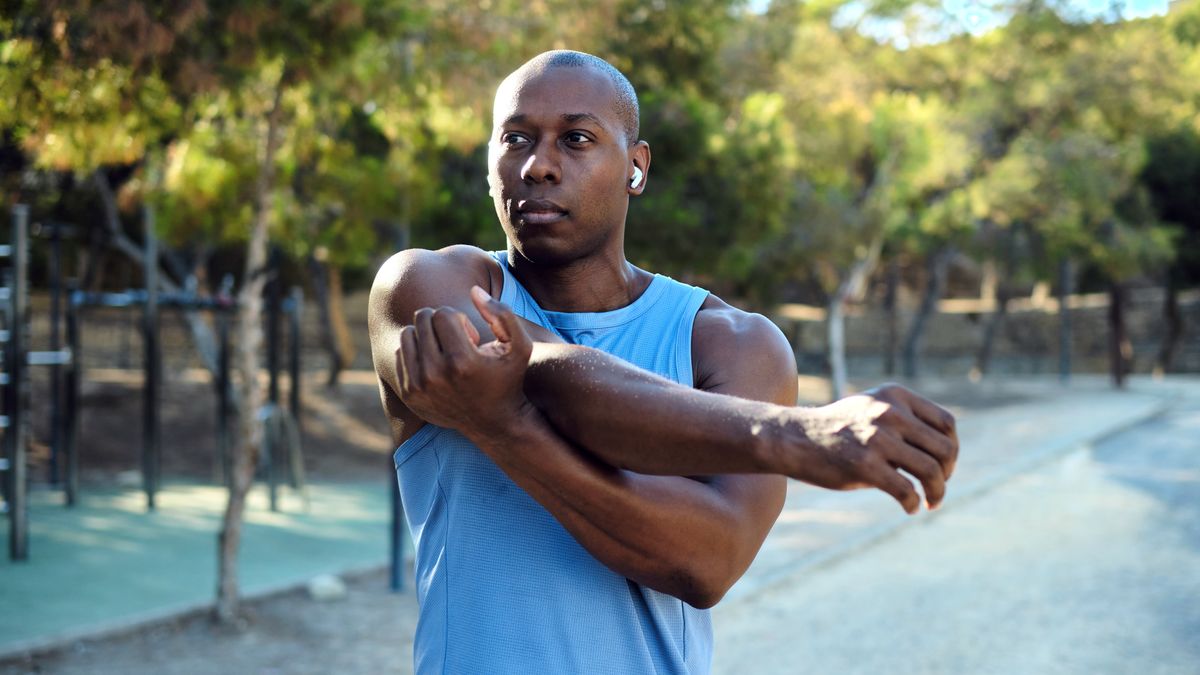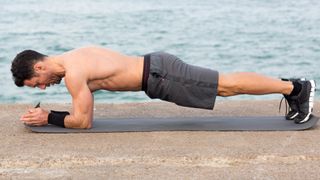How to use music to boost your workout performance, according to science
Pop your headphones in, press play, and get results

I am a music fiend. I pop on a set of workout headphones at pretty much every opportunity and listen to my favorite tracks, new discoveries, and, when I'm training, the best new workout music.
Given that music permeates my entire being, it's not really surprising that I find it pretty motivational during exercise too. But is this a universal feeling? Can music actually improve your workout, or is it all in my head?
Earlier this month, Spotify Wrapped dropped, and people gleefully shared their highlights from the year, reflecting on the songs that made them happy, sad, excited, or everything all at once.
So music can definitely make you feel things, but it's not always clear if that translates into something more tangible when it comes to your exercise routine. If only there were some scientific studies looking into this. Oh, wait, there are! So what do they have to say about the performance benefits of a good playlist?
Music boosts performance, but the songs matter
If you enjoy picking up weights, the good news is that listening to music before or during a resistance training workout can help boost measurable performance metrics, like handgrip strength, muscle endurance, and power, according to a review published in the Strength and Conditioning Journal.
The researchers analyzed previously-published studies on the topic and found that things like tempo, volume, and genre all play a role in the effectiveness too, which explains why gyms often play mainstream popular music out loud, rather than letting you train in the quiet.
By combining and assessing the results of other studies, the team found a few actionable takeaways; you get the best effect with faster tempos (above 120 bpm), at a volume of between 70 and 80dBs, in a genre that you enjoy, whether that's dance, hip hop, electronic or rock — or anything else that takes your fancy.
Sign up to get the BEST of Tom's Guide direct to your inbox.
Get instant access to breaking news, the hottest reviews, great deals and helpful tips.
But the most common finding was that you only get these effects if it's music that you like and choose yourself. So, pre-programmed soundtracks to classes or YouTube workouts may not have the same positive boost if it's not the kind of songs and genres you usually listen to or enjoy.
And if you're more a fan of cardio sessions, the good news is most of this applies to you as well. Research published in the journal Medicine & Science in Sports & Exercise found that music helped lower heart rate and blood pressure, and increase time to exhaustion during cardio exercise.
It's not the same for all types of workout

These studies have confirmed (to some degree) what many of us already thought: music is a great motivator. But is that because it stimulates physical changes in the body or mental ones?
There's not enough evidence to conclude either way, but a study published in Frontiers in Psychology has some interesting insights. The researchers found that music was most beneficial during endurance exercise, and less helpful during high-intensity workouts.
The team think this may be because endurance exercise makes us more aware of external sources (like music) while making decisions like how long to hold a specific move or get through an intense round of weightlifting. So we need our mind to be on board during longer or endurance workouts.
This definitely rings true for me — I find it a lot easier to power through a 40-second set of burpees than hold a plank. Usually, I'm about 15 seconds into a plank when the urge to check the timer kicks in, and by 30 seconds, my brain wants to give up.
Maybe it's because we have more to do during dynamic exercises, so we're more distracted and less focused on when our brain that tells us we're tired. But it could also be that the mechanisms needed to move our muscles quickly don't need our conscious mind involved as much too.
How do you find good workout music?
When I find a song that gets me excited and energetic, I run it by SongBPM, which lists the beats per minute (bpm) of a huge range of tracks. If it's around or above 120 bpm, I add it to the playlist. This is a good way to start a playlist from scratch, but not everything has to be so manual.
If you use Spotify, there are thousands of public playlists dedicated to exercise. Find one you like, add it to your library, and you can fire it up when you're ready to train. And because Spotify is so popular, many trainers and yoga teachers design custom soundtracks to their classes you can follow too.
I prefer Apple Music for working out, mostly because I use the iTunes Cloud Match service to sync my home library, so Apple Music has a really good sense of what I like to create its personalized playlists. Then again, you can create AI playlists on Spotify that really hit the groove you're after.
Google has a similar feature that allows you to use Gemini to create workout playlists on YouTube as well, so there are plenty of options out there if you need something in a pinch or want to mix up the mood of your exercise soundtrack.
More from Tom's Guide

James is Tom's Guide's Fitness Editor, covering strength training workouts, cardio exercise, and accessible ways to improve your health and wellbeing.His interest in fitness started after being diagnosed with a chronic illness, and he began focusing on strengthening his core, taking regular walks around the city, and practicing meditation to manage the symptoms. He also invested in fitness trackers, home workout equipment, and yoga mats to find accessible ways to train without the gym.Before joining the team at Tom’s Guide, James was the Fitness Editor at Fit&Well, where he covered beginner-friendly exercise routines, affordable ways to boost your wellbeing, and reviewed weights, rowing machines, and workout headphones.He believes that exercise should be something you enjoy doing, so appreciates the challenge of finding ways to incorporate it into everyday life through short muscle-building sessions, regular meditation, and early morning walks.